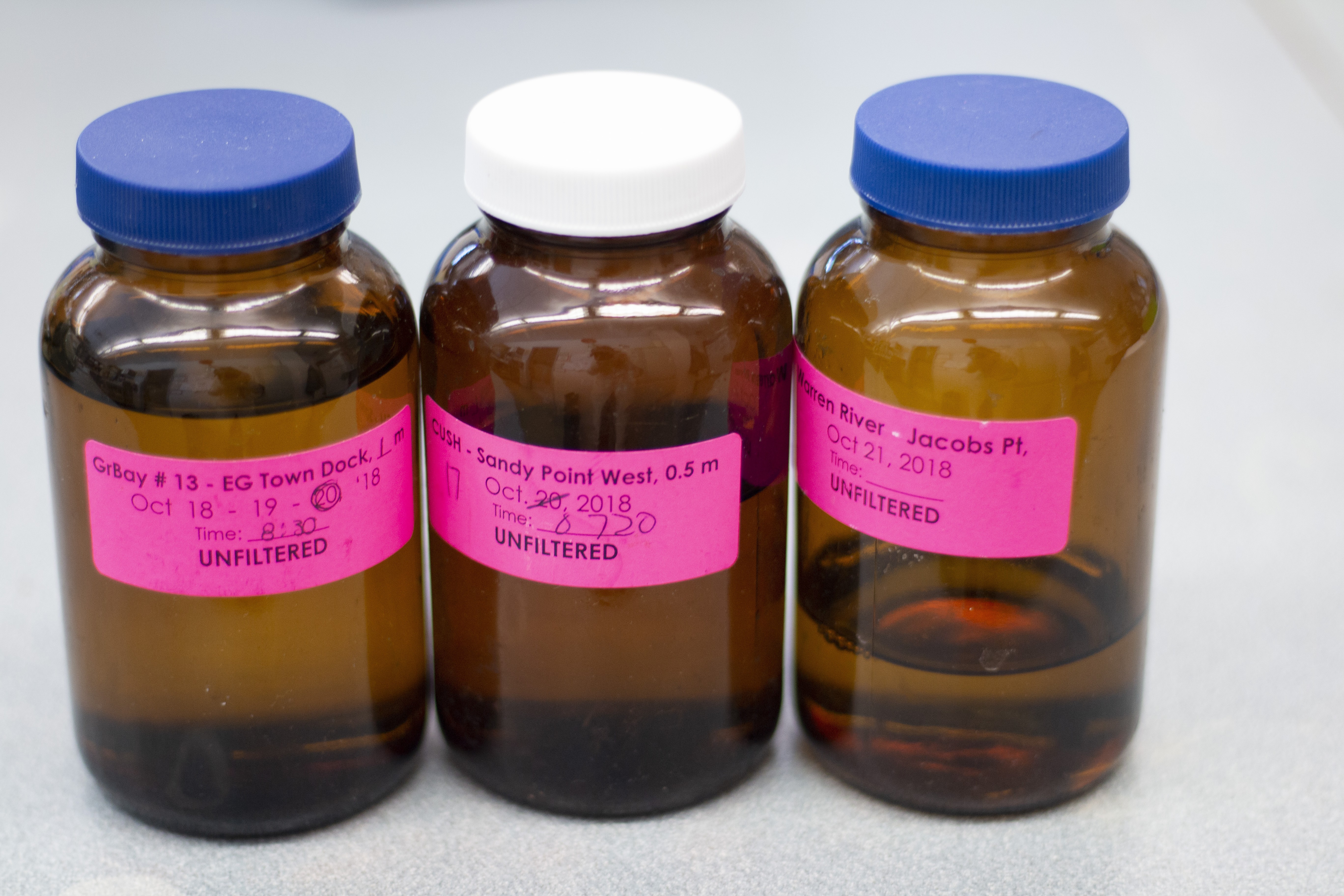The Watershed Watch Program at URI monitors water bodies across Rhode Island and Connecticut. Photo by Grace DeSanti.
Whether it is as far west as Connecticut, as far south as Block Island or as far north as Woonsocket, there are important ecosystems in many bodies of water across the area. The University of Rhode Island is home to a volunteer program, known as the Watershed Watch Program, that helps monitor many of these bodies of water.
The program tests various bodies of water around the state for factors such as algae, bacteria, nutrients, temperature and water clarity.
“If it’s wet, we pretty much have folks out monitoring it,” said Elizabeth Herron, the director of the program. “What we’re doing is trying to develop long-term baseline information about what the current conditions are in these waters.”
Most sites monitored by the Watershed Watch are observed from May through October. Volunteers for the program are assigned a location to monitor either once a week or every other week.
“[Volunteers] may live on a lake or be an avid fisherman and go out to the same river all the time and want to keep an eye on it, or they may just want to learn more about the environment,” Herron said.
All of the data collected as a part of the Watershed Watch is public. Herron said they share their data with the Department of Environmental Management (DEM) as well as local organizations interested in the data. According to Herron, DEM uses the data collected in their water quality database.
“It is the foundation of their own water quality assessments and often part of reports such as what is called a TMDL, [which stands for] total daily maximum loads,” Herron said. “This is how the state helps restore waters that may have problems.”
The Watershed Watch also works with several local beaches to help monitor bacteria levels, according to Herron. Data from the testing is sent to DEM, who determines whether or not it is safe to swim.
“Those results go to the Department of Health and can result in a beach closure,” Herron said. “Often we work with DEM to identify potential areas of concern, where we notice there is higher bacteria in the area and DEM goes and follows up on it.”
Sue Kiernan, the deputy administrator of water resources for DEM, said in a statement that the Watershed Watch has been a valuable partnership for the state.
“This has been a long and very productive partnership that has been of great benefit to the state by generating data that helps us understand the condition of our lakes, ponds, streams and coastal waters and engaging hundreds of volunteers in the local stewardship of these important resources,” Kiernan said in the statement.
Because the data collected by the Watershed Watch is used in official capacities, it is important for the testing to be accurate. Herron said they conduct both classroom training and field training in order to prepare volunteers.
“We need to make sure it is credible so we do have very detailed instructions, we do most things in replicates, so you don’t just do one measurement, you do each [test] multiple times so you make sure you are getting an accurate measurement,” Herron said.
While the information collected is not used directly by the volunteers themselves, the information collected can be used to give researchers information about mitigating or solving the risks facing watersheds. Herron said the program is currently part a regional initiative to study algae blooms, which are particularly harmful to water-based ecosystems.
Part of the initiative involves both identifying water bodies most at risk for developing algal blooms and identifying ways to determine if a bloom is about to occur.
“All of this data is used by people and researchers that are trying to come up with solutions,” Herron said.
All of this data, however, could not be collected without the volunteers who take part in the program. The volunteers consist of people of all ages and from various backgrounds, including many who do not have a science background, Herron said.
Herron said that some of the volunteers have been with the program for several decades, which includes five volunteers who have collected data for over 30 years. Other volunteers have been with the program for anywhere from several years to close to 15 years, Herron said.
“[Some volunteers] are totally dedicated to it and can’t imagine it not being a part of their life,” Herron said.
Additionally, Herron said volunteering for the Watershed Watch is a good way for families to participate in a science-based program and get outdoors at the same time.
“It’s a great way to be outdoors and make yourself feel involved while also having a bit of fun,” she said. “It’s also a great way to monitor a place you love and develop a sense of stewardship to make sure you’re doing something and not just sitting back and watching.”





